
| Wanderings around Wellington |
|
|
|
|
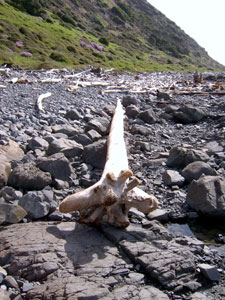 What long sea voyage could this bleached tree trunk have made? |
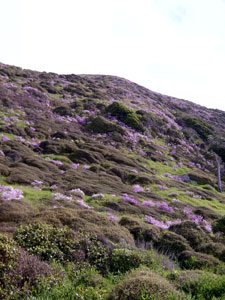 Wind-sculpted and mauve-splashed hillside |
To our east the cliffs were draped in a wind-sculpted green mantle of coastal shrubs, splashed with the yellow and pink, while to the west the green waters of the Tasman Sea surged up against the rugged black rocks of the foreshore. Bleached-white piles of driftwood, some still whole tree trunks, lay in piles at the high tide mark, a silent witness to the power of the wind and ocean in this part of the world. |
|
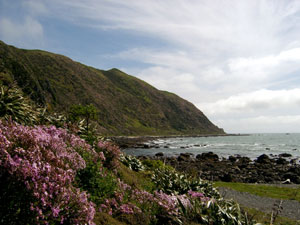 |
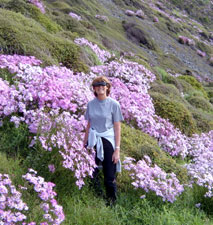 |
||
|
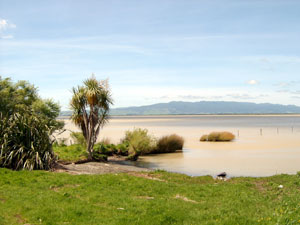 Lake Wairarapa |
|
 Palliser Bay |
|
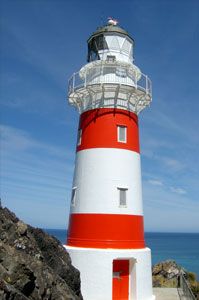 Cape Palliser Lighthouse |
|
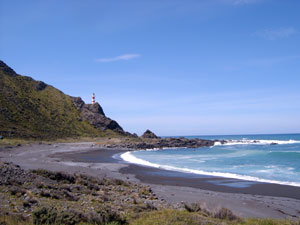 |
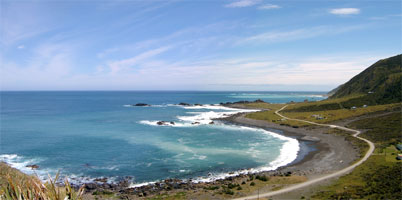 Views to and from the lighthouse |
|
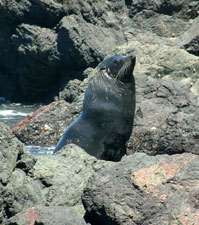 |
Walking across a rock platform not far from the lighthouse, a strong fishy waft greeted us - either the salmon pate sandwiches had gone badly off or else we had reached the local seal colony. A loud grunt from a few metres to our right confirmed the latter, and we found ourselves on speaking terms with a number of New Zealand fur seal females and pups. Across a wide rock pool, sunning himself on a flat rock, a solitary bull barely deigned to look at us, while, floating lazily in the waves, another gave us the one-flipper salute as it cooled itself off.
|
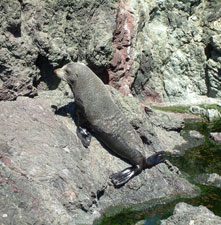 |
It was hard to leave our new found foul-fishy smelling friends, but time was short and we had planned a walk up the Putangirua Stream on the way back. This stream had carved a course through the gravelly, pre-conglomerate soils, leaving behind the Putangirua Pinnacles, a spectacular group of strangely eroded landforms. Again we left quickly, dark clouds where gathering in the west over the Rimutaka Ranges - a sure sign that the weather was about to change for the worse yet again. |
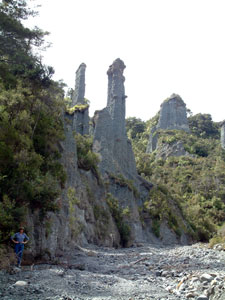 Eroded pinnacles and columns lining the Putangirua Stream bed |
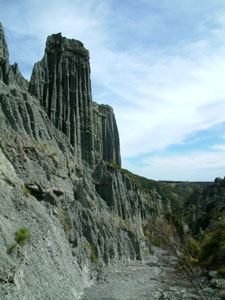 |
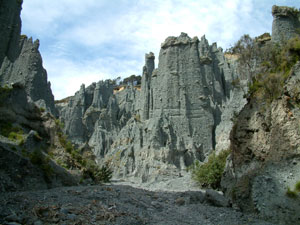 |
 Storm clouds gather over the Rimutakas |
Wellington City to Sea Walk We much prefer small cities to their larger bustling sisters. Wellington is a compact and attractive city on a beautiful harbour, but its reputation as a wet and windy place was upheld. However, wild weather provided us with the opportunity to do other things, such as visit the remarkable Te Papa, the national museum of New Zealand, and listen to a local band playing old Cuban salsa - straight out of the Buena Vista Social Club. Wellington prides itself in a modern cafe-scene sophistication and, weather aside, it seemed a great place to live.
|
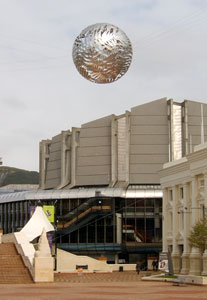 The modern civic centre |
 "The Beehive" - housing New Zealand's parliament |
|
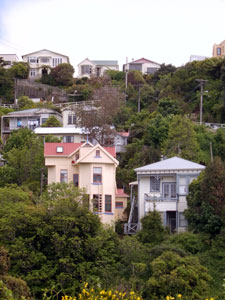 19th century houses (and a few more recent ones) clinging to the hillsides |
|
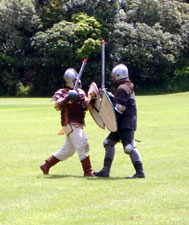 Where else would you see medieval knights at play? |
|
The undulating walkway took us past old settler cemeteries; through the Botanic Gardens to vantage points overlooking the city and harbour; past the Victoria University; down into historic old quarters of the town (where we stopped for a latte in trendy Aro Road with its 19th century weatherboard houses and shops); up through suburbia where houses clung to the steep hillsides; along streams, playing fields and golfcourses on the Town Belt; over steep windswept coastal hills, where gorse, broom and boneseed bloomed golden in their weedy splendour; and finally down to sleepy, but beautiful Island Bay, where we caught a local bus back to the city. These walkways are great way to get to know Wellington. |
||
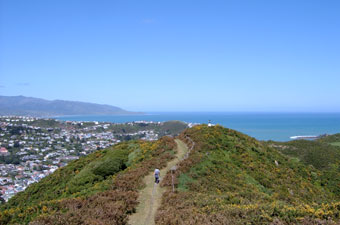 Descending from the windswept Tawatawa Trig |
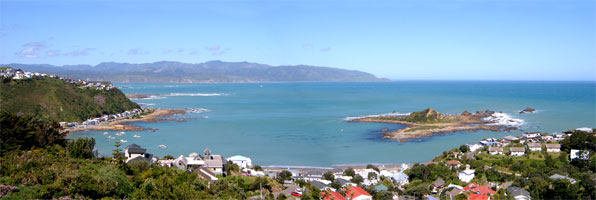 Island Bay |
This photo is included ...... |
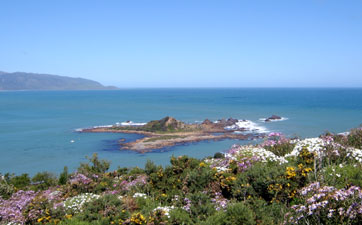 |
.... just because I like it! |